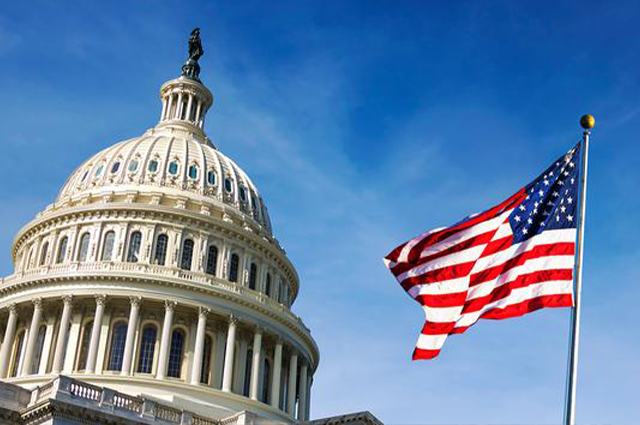For the past 18 months, travel to the US has been difficult for many and impossible for others.
If you tried to plan a trip, applied for a visa, or wanted to travel to the US during that period, you know the frustration and uncertainty that COVID-19 caused in the US and worldwide.
Harsh US travel restrictions banned travelers to the US from 33 countries, namely 26 European nations (known as the Schengen countries) and the UK, Brazil, China, India, Iran, Ireland, and South Africa. Another 150 countries were not placed under the travel ban.
Even with a valid visa, if you were from one of the banned countries, you could not visit friends or family in the US unless you were included in the exemption categories of the ban:
- US citizens
- lawful permanent residents;
- spouses and minor children of US citizens or lawful permanent residents;
- parents or legal guardians of a US citizen or lawful permanent resident unmarried minor child;
- siblings of a US citizen or lawful permanent resident child, provided both are unmarried and under the age of 21;
- Diplomats;
- Fiancé(e)s of US citizens and their dependents (K visas);
- Certain Students (F and M visas);
- Essential visitors, and other categories
As a citizen of a banned country, traveling to the US for the past 18 months was all but impossible.
Travel Ban Lifted – November 8, 2021
But, on November 8, 2021, the US lifted restrictions on international travelers coming to the US from the banned 33 countries.
But if you are a non-US citizen traveling to the US, you must be fully vaccinated – and prove it.
And if you are traveling by air, you must also provide proof of a negative COVID-19 test, along with proof of your vaccination.
If you are traveling by land from Canada or Mexico, you still need to be fully vaccinated but do not need to produce a negative COVID-19 test.
CDC Says Fully Vaccinated with an Accepted Vaccine
As of November 8, 2021, if you are traveling to the US, here are the COVID-19 requirements you must follow according to the US Centers for Disease Control and Prevention (CDC).
Before boarding a flight to the US from a foreign country, all passengers two years of age and over must
- Have proof of being fully vaccinated from an approved vaccine, and
- Have proof of a negative COVID-19 test done within 72 hours before departure
Fully Vaccinated
You can find the requirements for fully vaccinated here, but generally, you are considered fully vaccinated
- 2 weeks after your dose of an accepted single-dose vaccine, or
- 2 weeks after your second dose of an accepted 2-dose vaccine,
- 2 weeks after your second dose of a 2-dose mix and match combination of accepted vaccines.
Acceptable Vaccines
The single-dose J&J (Janssen) vaccine and the two-dose Pfizer-BioNTech and Moderna Vaccines are acceptable vaccines to the CDC. Also accepted are some vaccines listed under the World Health Organization Emergency Use protocol, including:
- AstraZeneca
- Covaxin
- Covishield
- BIBP/Sinopharm
- Sinovac
Notably missing is Russia’s Sputnik V vaccine (WHO authorization is still pending), limiting the entry of many travelers from Russia and those from Europe, Latin America, and the Middle East who used this vaccine.
Exceptions
Some groups are exempted from the new vaccine requirements, including
- Minors under 18 years of age
- Documented medical conditions with vaccine contra-indication
- Diplomats, and
- Other categories
American Embassies Visa Processing Not Back to Normal
Even though the travel ban has been lifted as of November 8, thousands of European non-immigrant visa holders are stuck in a visa processing slow down.
In the first six months of President Biden’s administration (2020), the number of visas issued to French and German citizens was half the amount issued the year earlier.
Issuance to Italian citizens was down about 60% for the same period.
For all of Europe, the number of non-immigrant US visas issued in 2020 was one-half of the amount issued in 2019. Some of the declines may be a drop in visa applications. But, likely, many of the applications are simply stuck in processing limbo.
Over the past year, American embassies in Europe simply canceled or postponed visa appointments. There were long delays in getting a new visa or even just renewing a visa.
And while the embassy processing is getting better, it is not back to normal at all.
How Long Does it Take to Get an Embassy Appointment
If you want to view the current Visa Appointment Wait Times from the US Department of State, just click here.
Some appointments can be made in a few days or weeks. But for many European countries, some appointments are either weeks or months. And some are being offered on an emergency-only basis.
You will be able to spot an “emergency only “appointment when your State Department website search returns the answer of “999 days.”
What Should I Do About Getting a Visa Now
As we emerge from the COVID-19 pandemic, things are getting better.
But because of COVID-19, traveling to the US or getting a US visa is a bit more complicated than before.
And it is hard for you to keep up with the changing COVID-19 requirements, accepted vaccines, US Embassy appointment wait times, and more.
Let us make this easy for you.
At ImmiVisa taking care of US visa applications and immigration issues is what we do.
It is ALL we do.
Our specialized team of immigration lawyers can help you find the easiest, least stressful, and least expensive best steps.
We keep up to date with anything that affects immigration or visas, including COVID-19 issues and requirements.
Whether you just want the most current information or have a question about getting a US visa – call us and let us help you with your next best steps.


